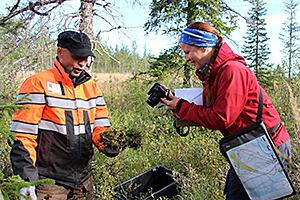The Lapland buttercup (Ranunculus lapponicus) is protected by the European Union’s Habitats Directive (92/43/EEC) and Finland’s Nature Conservation Act (1996/1096). It is one of the northern plant species that Finland has a responsibility to monitor and protect. While it is commonly encountered throughout Lapland, the Lapland buttercup is considered rare elsewhere in Finland and Europe.
At Agnico Eagle sustainable development means making sure that health, safety, environment and social acceptability activities are integrated into our business strategy and management principles at all levels. We also pride ourselves on ensuring that we remain compliant with regulations in the areas where we do business.
Recently our Kittilä mine was granted permission through the Nature Conservation Act to undertake specific measures to protect Lapland buttercups growing in close proximity to our operations. To do this we established a conservation area, Lapinleinikinmukka, on the western side of the Seurujoki river.
The process began in June when our team worked with a biologist to count the number of the Lapland buttercup flower beds that may be affected and to assess their condition. At the same time, the soil was also analyzed. In the new conservation area, we then identified suitable habitats for the incoming plants and all plants to be moved and the areas to which they were to be transplanted to were clearly marked.
The replanting itself took place in August. In conjunction with this, the detailed locations of the original plants were recorded, and the plants were photographed before they were dug up. All plants were then watered carefully, both before their transfer and again after replanting. The area where these plants originally grew tends to be naturally quite dry, and the low rainfall levels during July had dried out the soil even further.
For replanting, the area was divided into a grid with the plants placed centrally in the squares. The corners were marked with posts to easily enable ongoing monitoring of changes in plants. In addition to establishing the conservation area and transplanting the affected plants, we continue to be responsible for monitoring their growth in their new environment. Our environmental department will water the plants at least once a week until the arrival of wetter weather in the fall.
This is considered to be the first time that a replanting of the Lapland buttercup has been undertaken so the project will also be providing critical new information on the transplantation behaviour of this plant species.



Leave A Comment